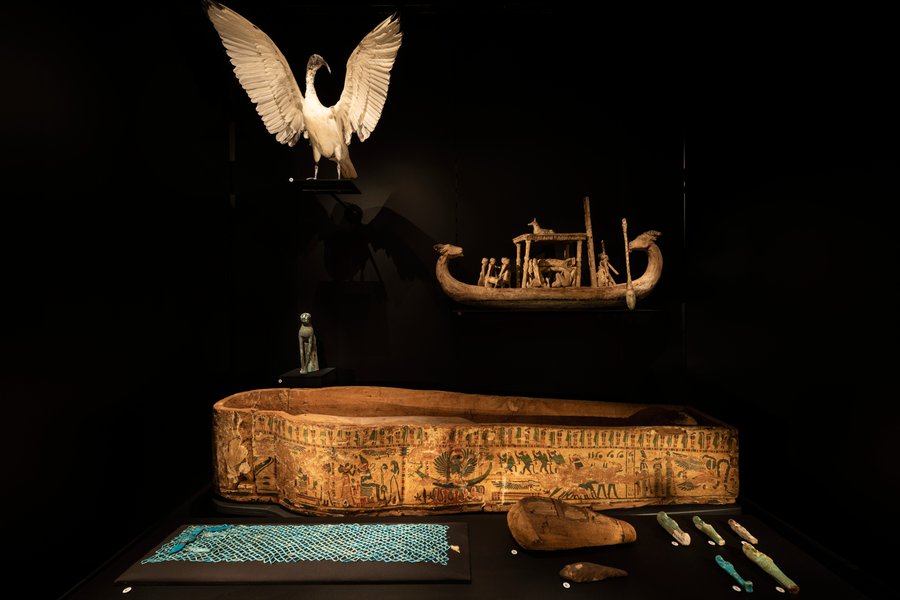For Westerners, Egypt has long been a country steeped in mystery, classical imagination and archaeological adventure. This was reinforced in the early 20th century by spectacular rediscoveries of tombs laden with mummies and artefacts. Demand for these artefacts led to a thriving black market. A century later, new technologies from scans to genetic analysis have led to revisions in our understanding of Ancient Egyptian artefacts, and have even revealed some to be clever forgeries.
The Australian Museum has a significant Egyptian collection, most of which was acquired in the early 1900s.
This Egyptian mummy was excavated from a tomb in Thebes (now Luxor) and was originally thought to have been the body of a middle-aged man who died about 2500 years ago. In 2004, the mummy underwent CT scanning at nearby Royal Prince Alfred Hospital. The scan surprisingly revealed the body of a woman, who was mummified 300 years earlier than previously thought.
Above the mummy, a wooden funerary boat adds an intriguing chapter to this story.
Wooden boats were often placed in Egyptian tombs during the Middle Kingdom period, which lasted from 2055 to 1650 BCE. This boat had been considered an example of this funerary tradition since Museum trustee Ernest Wunderlich acquired it for his personal collection. But scholars noted that its form, style and colouring are not consistent with other funerary boats and its authenticity has been questioned. In an attempt to resolve the mystery, the Museum is employing technology to test the boat’s origins. Carbon-14 dating indicates that at least part of the object originated in the Middle Kingdom period, but more corroborative evidence is required

